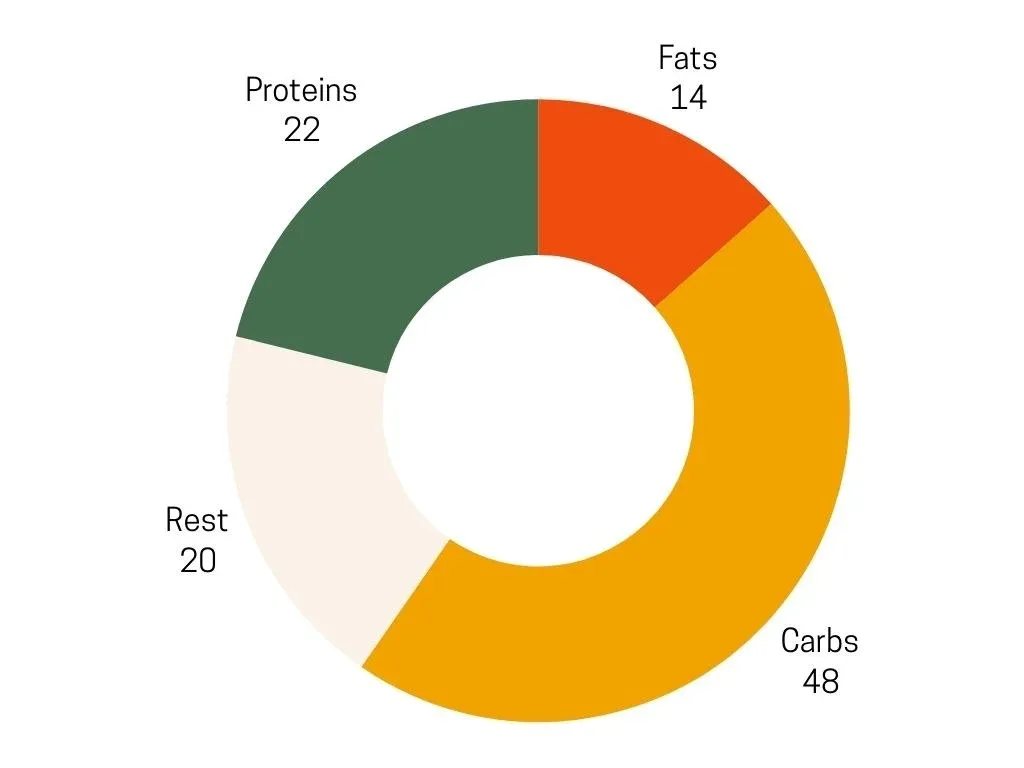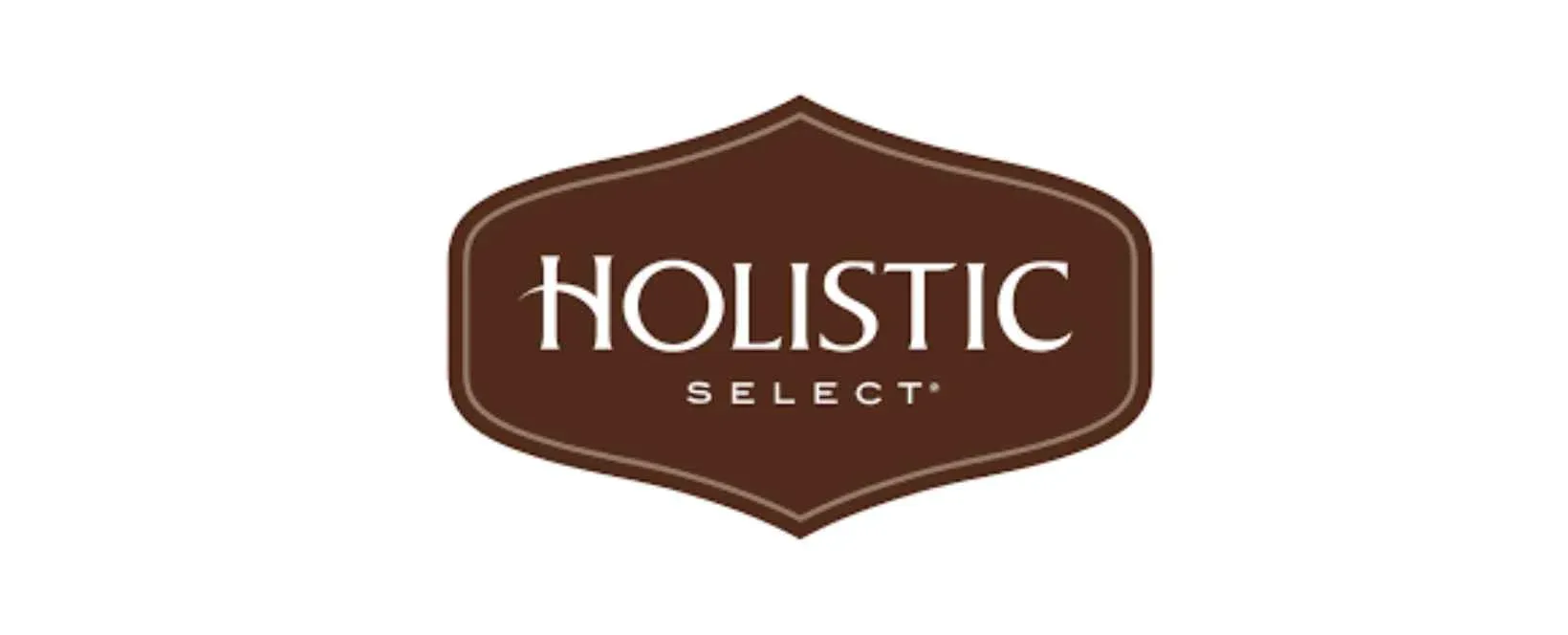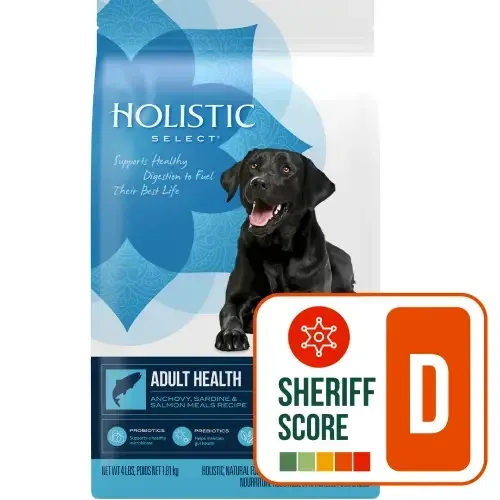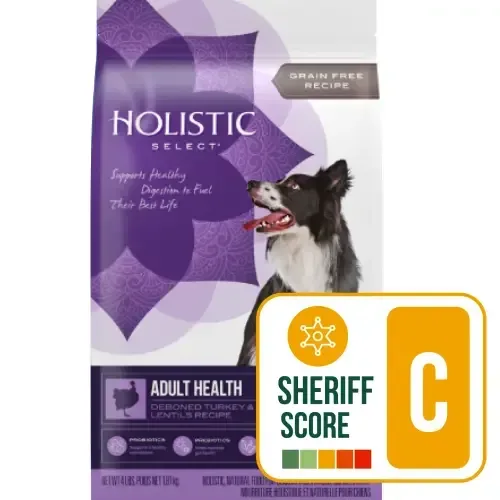Holistic Select is an American company that makes kibble for dogs and cats. They have their own production facility in Indiana. Let’s see if their kibble meets various quality standards and is satisfactory.
- Good levels of animal protein.
- Animal-based protein sources are named.
- Enriched with probiotics.
- The balance of macronutrients is good in some recipes.
- Some recipes can be protein-deficient for some dogs.
- Carbohydrate levels are generally quite high.
- We do not know the ash content of the recipes.
- Long list of supplements and additives
Holistic Select – Anchovy & Sardine And Salmon Meal Recipe – Analysis
Let’s now dive deeper into the puppy recipe characteristic of what the Holistic brand produces. This evaluation is based on the 23 criteria of the “Sheriff Score”.

| Criteria | Evaluation | Comments |
|---|---|---|
| Carbohydrate Content | 🔴🔴 Very High – 47.5% | The carbohydrate content is very high. This can lead to weight gain and harm your dog’s metabolism. Reduce carbs to below 30% is generally recommended. Look low glycemic index sources like sweet potatoes, lentils, chickpeas, brown rice. |
| Protein Content | 🟠 Average – 25% | The protein level is on the lower end of the acceptable range. For certain breeds of dogs or dogs with high activity level, this formulation may be insufficient. 30% of proteins (or mire), would be better option. |
| Protein-Calorie Ratio | 🟠 Average – 69.46 | The protein-to-calorie ratio is a more precise way to calculate the protein content in dog food. This ensures that dogs receive enough protein relative to their energy needs. A minimum score of 80 is recommended. Below this threshold, some dogs may not get enough protein and could become deficient. The score here is average, which may be suitable for some dogs but not for others. |
| Protein-Phosphorus Ratio | 🟠 Average – 31.25 | If the kibble does not contain too much phosphorus relative to the protein, one can assume that the presence of bones and cartilage is limited compared to the meat or MSM. Since phosphorus is a mineral found in high amounts in bones, a low protein-to-phosphorus ratio indicates a large quantity of carcass and/or bones in the composition, which should be avoided. The score here is average, which might suggest that the animal parts used are not necessarily the highest quality cuts. |
| Fat Content | 🟢🟢 Excellent – 13% | The fat content is within the ideal range for promoting a healthy coat and skin. |
| Quality and Transparency of Fats | 🟠 Average | Canola oil is not considered ideal for dogs because it is high in omega-6 fatty acids which, when not balanced properly with omega-3 fatty acids, can lead to inflammation and other health issues in dogs. In this recipe there’s also Salmon, which is a better option. |
| Ash Content | ❓ Non-specified | Without information on ash content, it’s challenging to assess mineral balance and the overall quality of the food’s ingredients. Providing this information could enhance transparency. |
| Fiber Content | 🟢 Good – 4.5% | The fiber level is beneficial for digestive health and is nicely within the recommended range. This helps with intestinal motility and stool quality. |
| Moisture Content | 🟢🟢 Excellent – 10% | An excellent moisture content like this supports hydration and aids digestion, which is crucial for overall health, especially in dogs prone to urinary tract issues. |
| Calcium Content | 🟢 Good* – 1% | Perfectly within the ideal range, supporting strong bones without risking excess that could lead to health issues like kidney stones or hypercalcemia. *Note that this score should be considered with some perspective, as the protein content is low. What would happen if the protein content were at 30%? The score would likely increase as well. |
| Phosphorus Content | 🟢🟢 Excellent* – 0.8% | At 0.8%, this is superb for kidney function and maintaining healthy bones, particularly important for growing or aging dogs. *The same observation as before applies here. |
| High Glycemic Index Ingredients | 🟠 Average | Although there is white rice (high glycemic index) in this recipe, most of the other carbohydrates have a moderate or low GI. To accurately assess this parameter, it would be necessary to know the actual amount of white rice included. |
| Animal vs. Vegetable Protein Content | 🟠 Average – 60-70% | Animal proteins are really the best choice for dogs. They’ve got all the amino acids dogs need to build muscles, make hormones, and stay healthy. Plus, dogs are naturally set up to digest meat better than plant proteins. This fits with their meat-eating ancestry and makes animal proteins more useful for them, especially for growth and everyday health. Plant proteins just don’t have the same complete mix, which can leave gaps in a dog’s diet. |
| Quality of Animal Proteins | 🟠 Average | Utilizing meals from various fish might be seen as a positive diversity, but fresh, identified sources of meat would provide higher nutritional value and are generally more digestible. |
| Preservatives | 🟢 Good – Natural | Using natural preservatives is a commendable practice, enhancing safety and healthfulness without compromising the food’s shelf life. |
| Known Manufacturing Location | 🟢 Good – Known | Holistic Select are made in the manufacturing facility in Indiana, U.S.A. |
| Transparency | 🔴 – To improve | We would like more information on the manufacturing processes, the actual quantities of each ingredient, and the sources of the ingredients. |
| Calcium/Phosphorus Ratio | 🟢 Good – 1.25 | This ratio is quite favorable, balancing bone health and reducing risks associated with imbalances such as skeletal problems in large breed puppies. But, only |
| Omega 6/Omega 3 Ratio | 🟢🟢 Excellent – 1.67 | Omega-6 fatty acids are pro-inflammatory, meaning they can contribute to inflammation in the body. Omega-3 fatty acids, on the other hand, are anti-inflammatory. A balanced ratio helps regulate inflammation, which is essential for preventing chronic diseases like arthritis and heart disease. |
| GMO Content | 🔴🔴 Concerning – Not non-GMO | The lack of non-GMO certification may concern health-conscious pet owners. Securing such certification could reassure consumers about the quality of ingredients used. |
| Organic Status | 🔴🔴 No – Not certified | Without organic certification, there’s a risk that synthetic pesticides or fertilizers have been used in producing the ingredients, potentially impacting the food’s safety and ecological footprint. |
Our honest opinion
The lack of information on ingredient proportions, sources, and manufacturing processes is currently the biggest drawback of this brand, in our opinion. However, there are some good aspects, such as named animal sources, a small portion of plant proteins, and some recipes with an interesting protein content. The addition of probiotics likely makes this kibble more digestible than others on the market. Still, we feel there are too many ingredients and additives in these recipes.





